#the century illustrated monthly magazine
Text
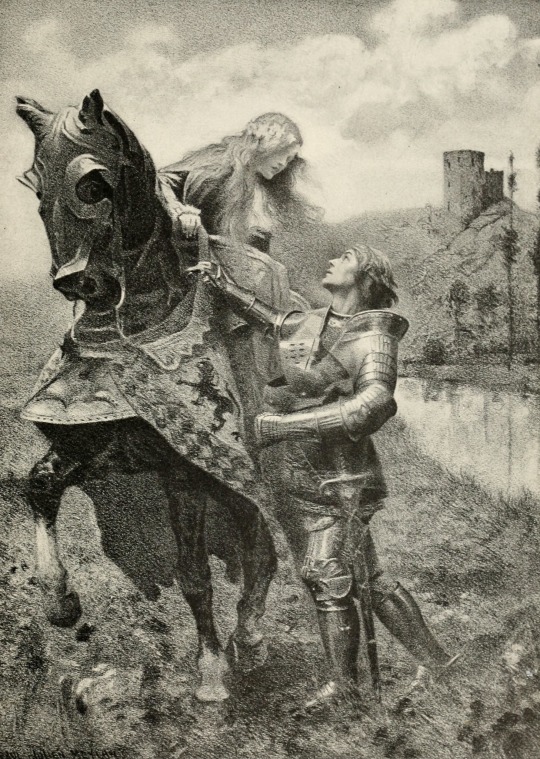
The Century Illustrated Monthly Magazine
Artist : Paul Meylan
May to October, 1913
La Belle Dame sans Merci
#la belle dame sans merci#paul meylan#john keats#the century illustrated monthly magazine#1913#poem#lady#garland#hill#colline#warrior#lake#lac#palfrey#palefroi#cheval#horse
2K notes
·
View notes
Text

#vintage magazine#the century illustrated monthly magazine#will bradley#illustration#printmaking#early 1900s
6 notes
·
View notes
Photo


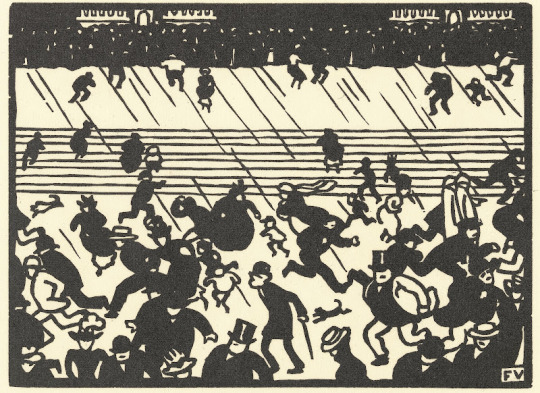
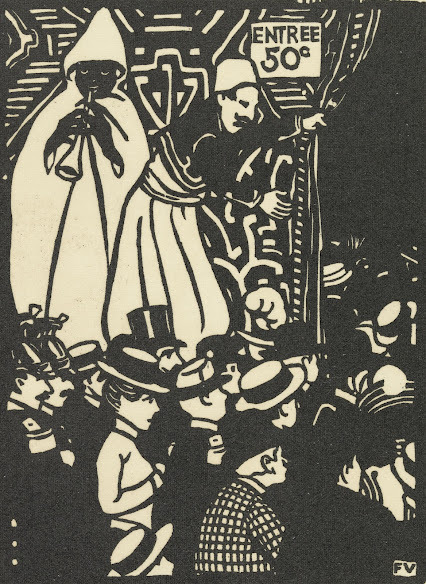
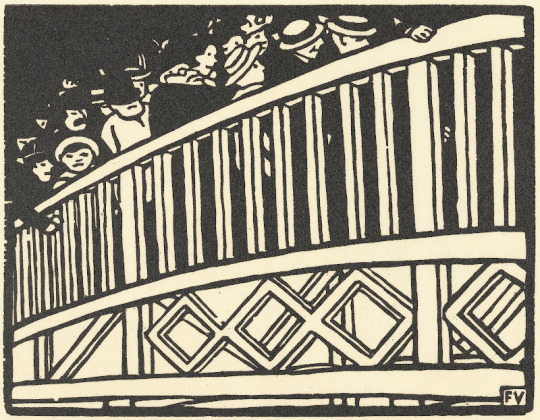
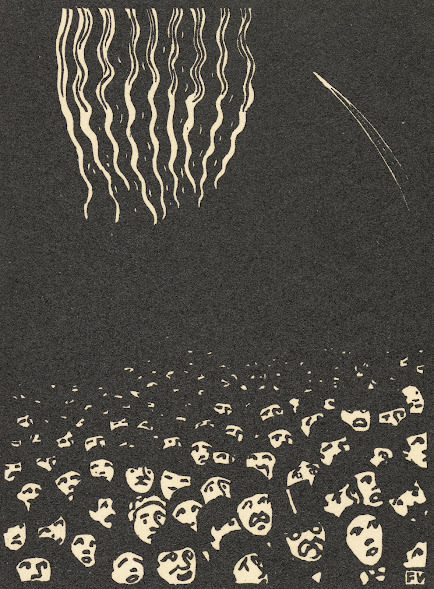
Félix Vallotton, Series L'Exposition Universelle (The World’s Fair), 1900
I: A la bijouterie (Looking at the Jewels)
II: Le Déjeuner en plein air (The Family Picnic Lunch)
III: L'Averse (The Shower)
IV: Rue d'Alger (The Streets of Algiers)
V: La Passerelle (A Footbridge)
VI: Le Feu d'artifice (Fireworks)
#félix vallotton#felix vallotton#woodcut#printmaking#the century illustrated monthly magazine#century magazine#swiss artists#art history#les nabis
51 notes
·
View notes
Text
It's #BuzzardDay!

Image: A. Lindsay, "A Buzzard Roost," Harper’s New Monthly Magazine, 1887.
Begun in 1957, every year the Cleveland Metroparks Official Buzzard Spotter welcomes these migratory birds back to their roost in Hinckley, OH:
BTW, in the U.S. "buzzard" is a colloquial term for the Turkey Vulture (Cathartes aura), not closely related to birds commonly called "buzzards" outside of the Americas. But feel free to celebrate any and all of them today!
#buzzard#buzzards#turkey buzzard#turkey vulture#bird#birds#birds in art#woodcut print#illustration#magazine illustration#Harper's New Monthly#19th century art#American art#A. Lindsay#1880s#Buzzard Day#common names#animal holiday#Cleveland Metroparks#animals in art
15 notes
·
View notes
Text
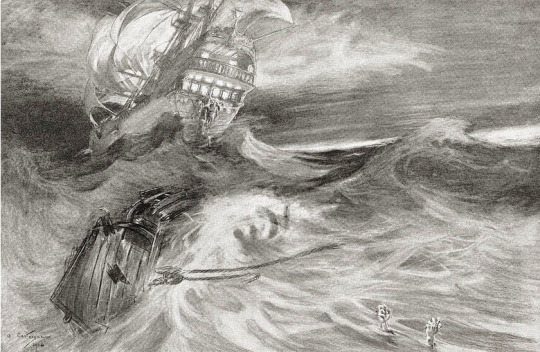
The Flying Dutchman. A Ghost Ship that can never make Port, doomed to sail the Oceans forever. From The Century Illustrated Monthly Magazine, May to October 1904
#naval art#flying dutchman#ghost ship#friday the 13th#19th century#age of sail#naval myth#sailing ship#art
160 notes
·
View notes
Text
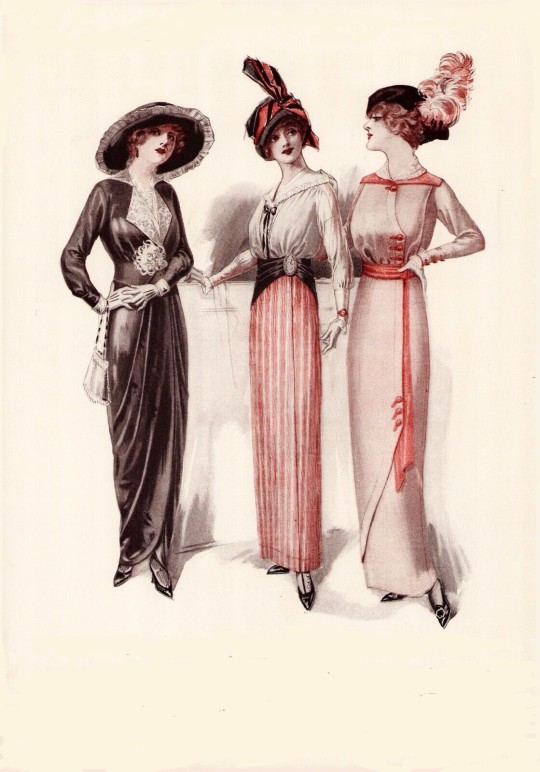
Ladies Fashion Illustration, The Delineator, September 1913.
The Delineator was an American women's magazine of the late 19th and early 20th centuries, founded by the Butterick Publishing Company in 1869 under the name The Metropolitan Monthly. Its name was changed in 1875. The magazine was published on a monthly basis in New York City. In November 1926, under the editorship of Mrs. William Brown Meloney, it absorbed The Designer, founded in 1887 and published by the Standard Fashion Company, a Butterick subsidiary. (x)
#fashion illustration#illustration#1913#the delineator#magazine#september#september issue#1910s fashion#1910s dresses#1910s mode#autumn fashion#fall fashion#delinator#hats#big hats#aigrette#day dresses#day outfits#ladies#womans magazine#1913 illustrations#chic#american#American fashion#American fashion history#fashion history#art
20 notes
·
View notes
Photo
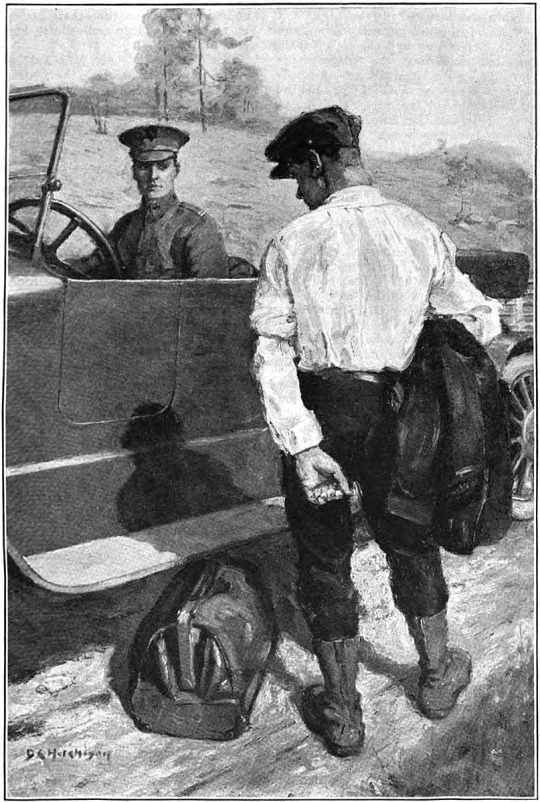
The Century Illustrated Monthly Magazine - 1919.
The Century foi uma revista mensal ilustrada publicada nos Estados Unidos da América, entre 1881 e 1930.
124 notes
·
View notes
Text

Happy Saturday, Clue Crew! I want to talk about the art displayed, next to Nancy Drew’s bed (as seen in Alibi in Ashes). I’ve already discussed (in a previous post) how Alphonse Mucha is featured, quite prominently, in several of the ND games. At a glance, one might think the three, framed posters, on the yellow wall, are his work. However, they were done by a contemporary of Mucha, named Paul Berthon. Like Mucha, Berthon worked in the Art Nouveau style, which is why it is easy confuse their pieces!
Paul Berthon…was a French artist who produced primarily posters and lithographs… Berthon studied as a painter in Villefranche-sur-Saône before moving to Paris… His study of the decorative arts influenced his print making, influencing the strong lines and natural details that guided his art. The vast majority of Berthon's lithographed posters did not include advertisements and were meant to stand on their own.
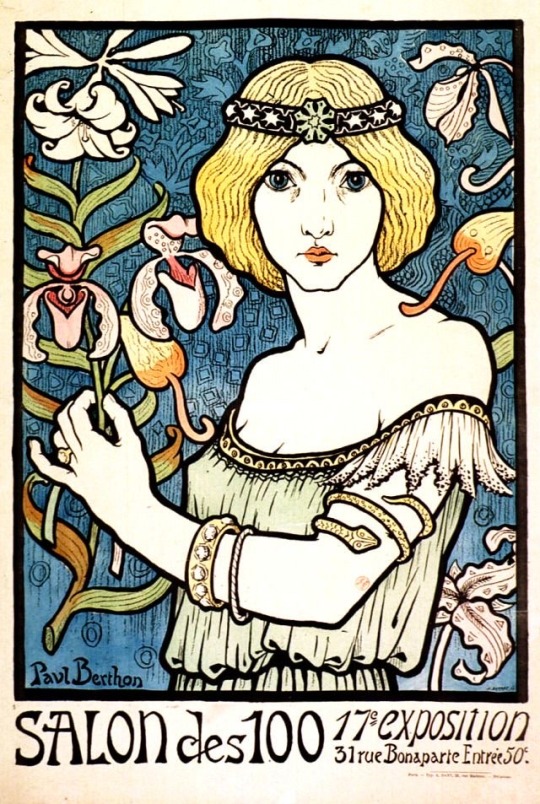
The piece on the far left, of Nancy’s wall, is a print named The Salon de Cent (Salon of the One Hundred). If you are unfamiliar what “the Salon” is, in reference to art history, it was:
…the official art exhibition of the French Academy of Fine Arts (Academie des Beaux-Arts) in Paris. First held in 1667, its name stems from its location at the Salon Carre in the Louvre. For almost 150 years…the Salon was the most prestigious annual or biannual art event in the world.
The aforementioned print, was advertising Salon des Cent, which was a commercial art exhibition in Paris, based at 31 Rue Bonaparte.
The Salon sold color posters, prints and reproductions of artwork to the general public at reasonable prices. The Salon held exhibitions until 1900. Many of the posters advertising Salon des Cent exhibitions have themselves become collectors’ items.
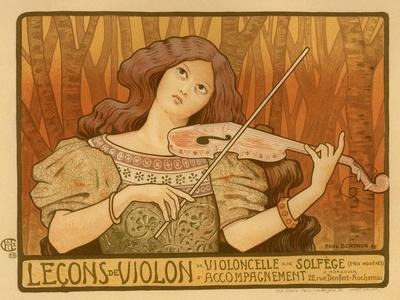
The middle poster of Nancy’s Art Nouveau collection, is another advertisement, for violin lessons (Leçons de Violin).
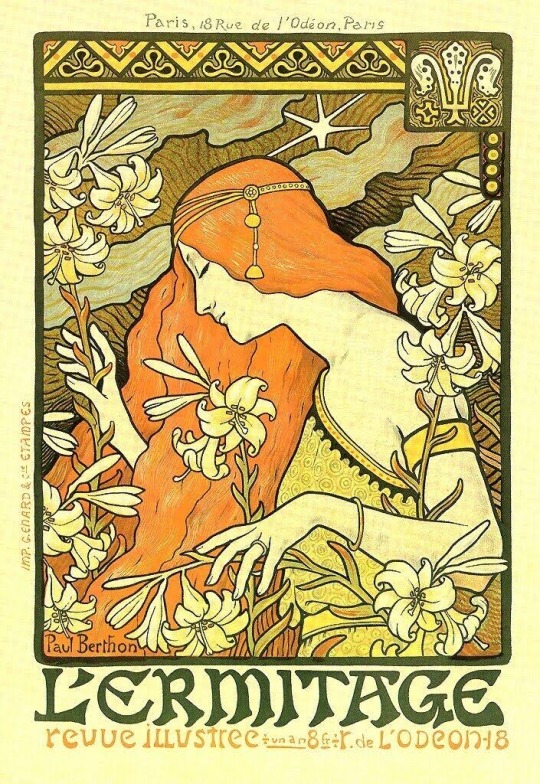
The last poster of the trio is L’Ermitage.
L’Ermitage was a monthly, literary review that was published in Paris, France between 1890 and 1907.
The publication came under new management in 1896 during which time the literary review was reorganized. Subjects included in the magazine expanded beyond poetry and plays to also include that of the visual arts. With the expansion of subjects, the editors decided to commission Art Nouveau illustrations to grace the covers…
Art Nouveau reflects the ideals and desires of Paris at the end of the nineteenth century, which include happiness and indulgence in life and beauty without all the turmoil and problems of the newly industrialized world. In this piece, Berthon uses a woman with long, flowing hair and flowers as a symbol of beauty and purity. The print consists of just four colors in addition to the black ink.
L’Ermitage was included in the Les Maitre de L’Affiches series, or Masters of the Poster. This series was originally offered as a subscription for collectors, in which a different poster was mailed out monthly and which could be bound together at the end of the year. L’Ermitage was mailed out in 1900 as plate 227 of the series. These posters were greatly appealing due to their smaller, more manageable size, and the high quality of printing materials. The original larger posters usually had to be rolled up to store and were printed with a lesser quality ink.
A lithograph copy of L’Ermitage is currently on display at the Los Angeles County Museum of Art in Los Angeles, California, the United States.
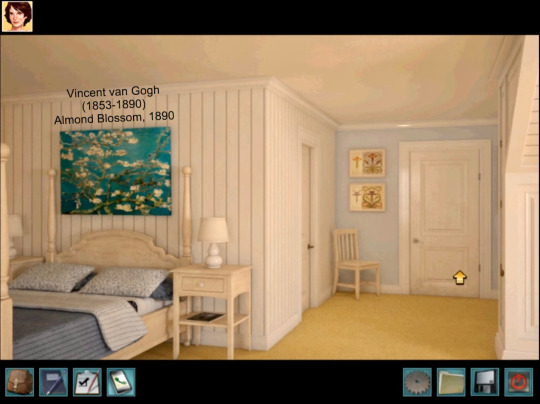
That does it, for the posters, on the yellow wall! But you’ll notice a canvas, prettily centered over Nancy’s bed. This is the very recognizable Almond Blossom, by the one and only, Vincent van Gogh.

You’ll see that the piece, in ASH, is a mirrored image, of van Gogh’s original. I can only assume this was done for copyright purposes, but that’s just conjecture.
Vincent loved nature. Blossoming trees, like in the painting Almond Blossom, were one of his favourite subjects to paint. He painted a number of variations on the theme: ranging from a small flowering sprig in a glass to lavishly blossoming trees.
Almond trees flower early in spring. The tree therefore marks the arrival of spring and the start of new life. And that was very appropriate in this case, as Vincent didn’t paint this work for just any old reason…
The painting was a gift for Vincent’s newborn nephew. The boy was born on 31 January 1890, and Theo and his wife Jo named him Vincent, after his uncle. Van Gogh was delighted to hear the news: ‘It does me, too, more good and gives me more pleasure than I could express in words’.
The painting became a treasured possession as soon as Vincent presented it to Theo and Jo as a gift. At first, it hung prominently above the piano in Theo and Jo’s living room. Later, once Jo had moved to Bussum following Theo’s death, the work hung in her and her son Vincent’s bedroom.
Following the death of Vincent and Theo, all of Vincent’s paintings passed into Jo’s hands. She sold a number of works during her lifetime, but Almond Blossom was so precious to Jo and her son that it was never to be sold. And that’s why to this very day, it is on display at the Van Gogh Museum.
For Van Gogh, painting Almond Blossom signified a new start. At the time, he had already been at an asylum in Saint-Rémy for almost ten months. Due to an attack of his illness, Vincent had not worked for weeks. He was now allowed back outside to paint, surrounded by nature.
Vincent worked hard, but that cost him dearly. Once he had completed the painting at the end of February, he had an attack that lasted for two months; his longest ever crisis. Once he had recovered, a new disappointment awaited: Vincent had missed his beloved flowering season.
‘If I’d been able to continue working, […] I would have done others of the trees in blossom. Now the trees in blossom are almost finished, […] I have no luck’.
Vincent chose an unusual perspective for Almond Blossom. He painted the branches from below and very close up. It is as if you are lying on your back on the grass, looking up at the branches above you, so that you can no longer see the entire tree. Vincent had seen this approach in Japanese printmaking and was inspired by it. These prints often zoom in on details from nature, and the image was sometimes cropped.
The subject itself also feels very Japanese, as blossom played a significant role in Japanese printmaking.
There you have it! I hope this information helps you appreciate ASH and Nancy’s room, a little more. I know I really appreciate the art, featured in the Nancy Drew games. I think it’s part of why I went into art history, to begin with! I owe a lot, to these games.
That is all. Happy scrolling.
#nancy drew#her interactive#clue crew#alibi in ashes#ash#vincent van gogh#paul berthon#nancy drew pc games#art nouveau
55 notes
·
View notes
Text
LGBTQ+ Characters in Comics from the 21st century I like
A few years back I did a post on LGBTQ+ characters in comics from the 20th Century I have a soft spot for. When it comes to the new millennium, the last two decades have seen an explosion of such comics and characters. So here is my short little follow up for the 21st century.

Jade
Starting off the new millennium the French comic series Djinn with Belgian writer Jean Dufaux, illustrated by Spanish artist Ana Miralles would run through three arcs for 15 years. I’ll never forget the first time during a comics exhibition I saw an absolutely captivating illustration of the character at the heart of the series, Jade. A fascinating, queer, and amoral enigmatic figure, Sultan’s favorite in the last years of the Ottoman Empire spoken of as a djinn who also seems the key to an immense treasure.

Fumi Manjôme
With little nods to Japanese girls’ literature and culture Sweet Blue Flowers by Japanese artist Takako Shimura is an enduring yuri series around high school girls and maturing. The shy lesbian Fumi and messy feelings are a major focus. Later adolescence can be an emotional time for anyone. Shimura softly explores when and how her characters mourn disappointments and disenchantment along with finding their identity.

Kevin Keller
Archie Comics were a staple of my childhood. The quintessential US slice-of-life comic focusing on a group of teenagers goes way back to 1941. However, the 21st century saw a reinvigoration of the Archie brand. Among the successes the gay Kevin Keller created in 2010 by US comic artist Dan Parent debuted in Veronica #202 and has since enjoyed huge popularity. Eventually, I was also drawn back as an adult reader with the gang grown up in the Life with Archie series. In 2012 Life with Archie #16 saw Kevin not only following in the footsteps of his dad as a soldier in the Army but marrying Dr. Clay Walker. Despite protests from bigoted groups the installment of the series would be another sold out hit earning Kevin the designation as “most important new character in Archie history.” Further a character that has also represented fighting the epidemic of gun violence in the US going on in the series to become a State Senator on the issue.

Richard III
Japanese artist Aya Kanno inspired by Shakespeare’s tetralogy Henry VI, Richard III and the famous 15th century War of the Roses in her series Requiem of the Rose King goes in a different direction, making her Richard intersex. Only the first of many choices in this girls’ comic which has also garnered attention from other well-respected artists. YMMV but the saga of this Richard has consistently been one of the more compelling examples over the last decade.

Lisa Williams and Ally Carter
Beginning as fetishistic illustrations and short strips by Croatian artist Stjepan Sejic (under a pseudonym) on DeviantArt, BDSM comic series Sunstone was a notable read for me in 2015. With genuine class and smart use of humour, the characters Lisa and Ally and their growing relationship are wonderfully relatable on many levels.
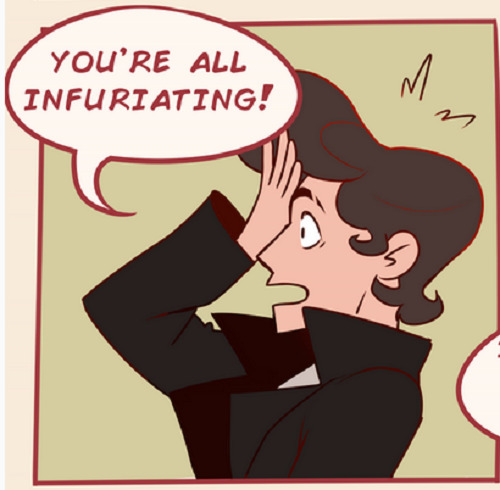
Ace
If you love the movie Grease but crave something 1950’s vintage queer the webcomic Rock and Riot by Chelsey Furedi might fit the bill. The cast is as wide and beautiful as a rainbow. Among the many teenage delinquent characters is the 17-year-old agender, asexual, demiromantic Ace. And founder of their own gang the Bandits and who definitely does things their own way.

Ionel
Another of the top titles from the 2010s I first came across the exquisite mystery webcomic Heart of Gold in the (now defunct) digital magazine Sparkler Monthly. The atmospheric ongoing series features Ionel a panromantic asexual pianist with albinism who is losing his sight and a gay priest Father Dunant who is known as a faith healer.
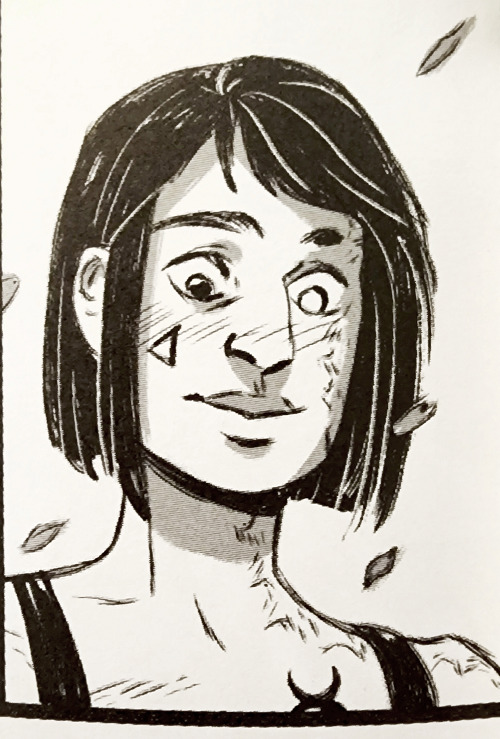
Milagro Villa
I’ve seen feathers, wings, and birds stand in for representations about abuse and trauma before. In the short comic Songbird For A Vulture US artist Naomi Franquiz does exactly that. Crafting one of the most poignant examples of an abuse survivor, found family, and healing included in Power & Magic The Queer Witch Comics Anthology.
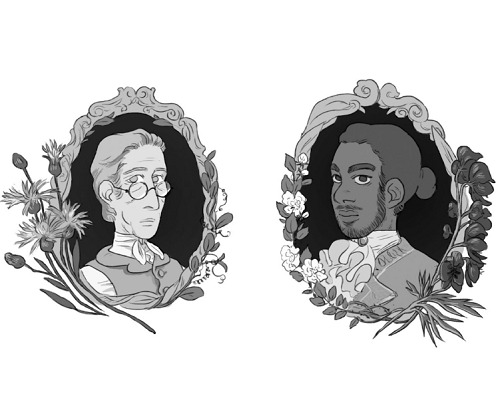
Ed Fiedler and Lucardo von Gishaupt
Forgive me the terrible pun but I’m a sucker for vampires, especially the queer variety. Letters for Lucardo by Finnish artist Otava Heikkilä is a delightful erotic comic series with a romance between vampire Lucardo and the older Ed.

Ryô Watari
I’ve gone on about self-actualization in fashion before. Series Boys Run the Riot by Japanese artist Keiko Gaku acutely presents a comic about trans teenager Ryô building confidence, friendships, and a street fashion brand.
#lgbtq characters#lgbtq comics#favorite lgbtq characters#djinn comic#sweet blue flowers#life with archie#requiem of the rose king#sunstone comic#rock and riot#heart of gold#songbird for a vulture#letters for lucardo#boys run the riot
27 notes
·
View notes
Text
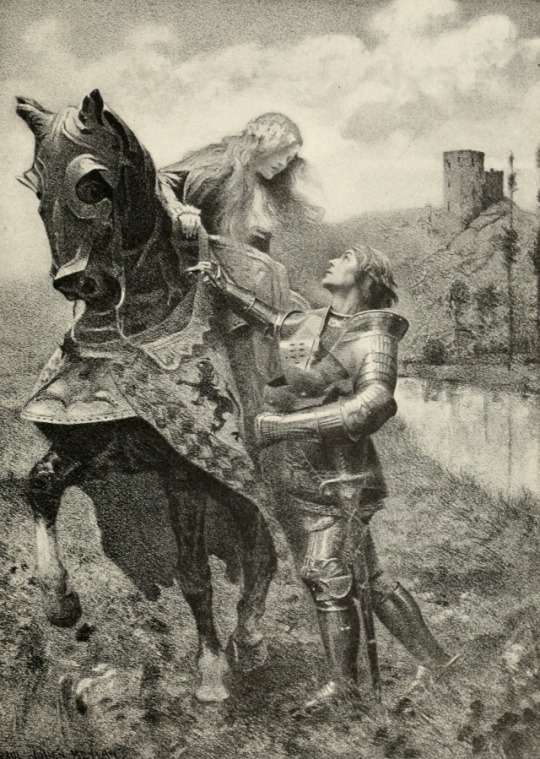
Paul Meylan, The Century Illustrated Monthly Magazine, May to October, 1913
5 notes
·
View notes
Text
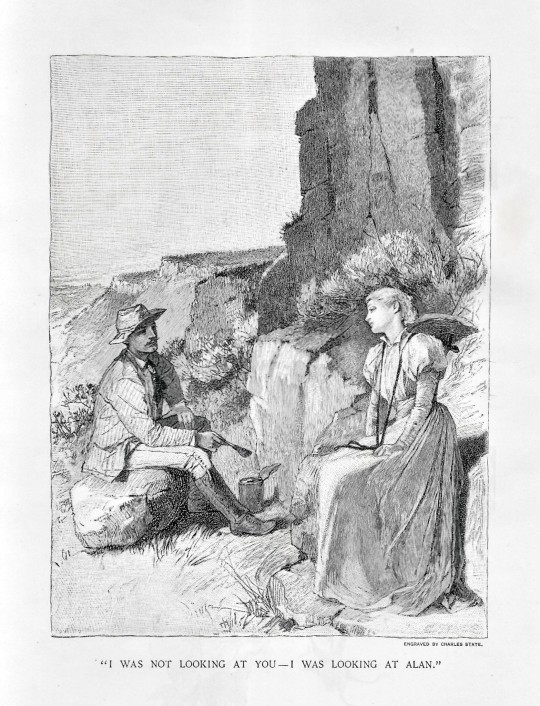
Mary Hallock Foote (American, 1847 - 1938), I Was Not Looking At You, 1892.
"The Century Company, 1892. Print. Illus. by Mary Hallock Foote / Charles State, Engraver. VG. No Binding. Sized 6.5 x 9.5 inches, engraved by State after the Foote drawing, very clean and bright, salvaged from a damaged issue of The Century Illustrated Monthly Magazine, Volume XLIV, No. 4, August, 1892."
5 notes
·
View notes
Text
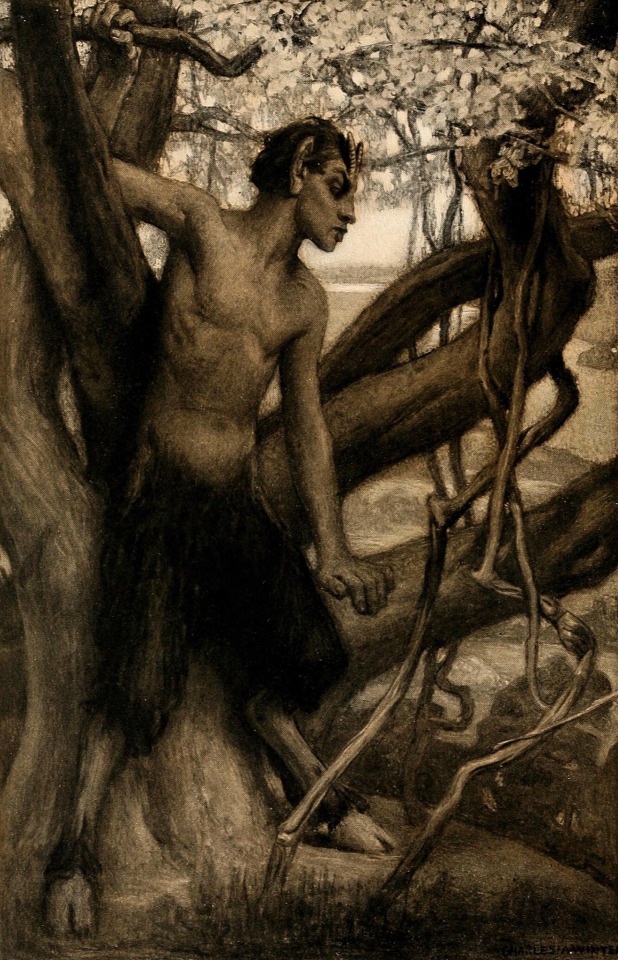
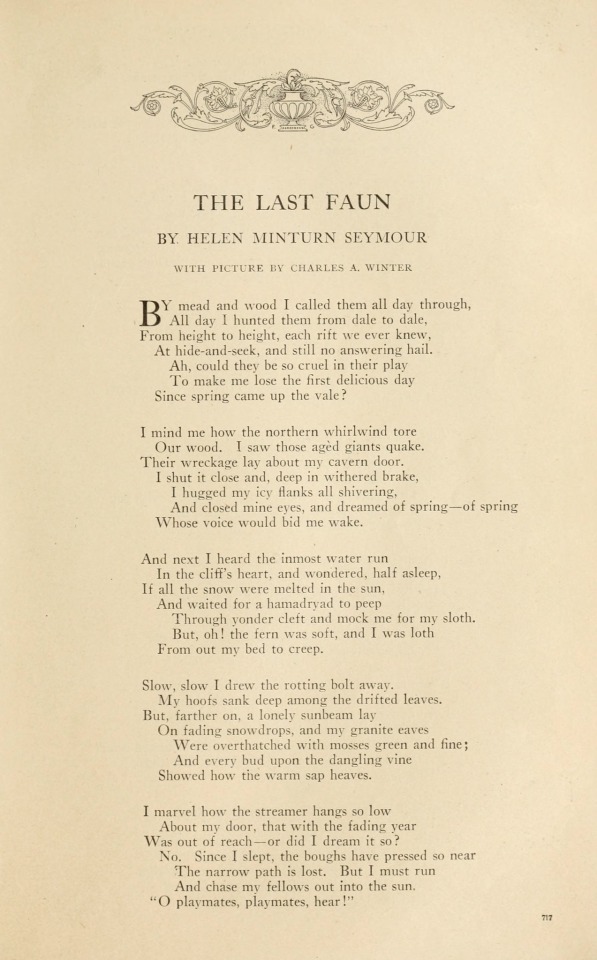

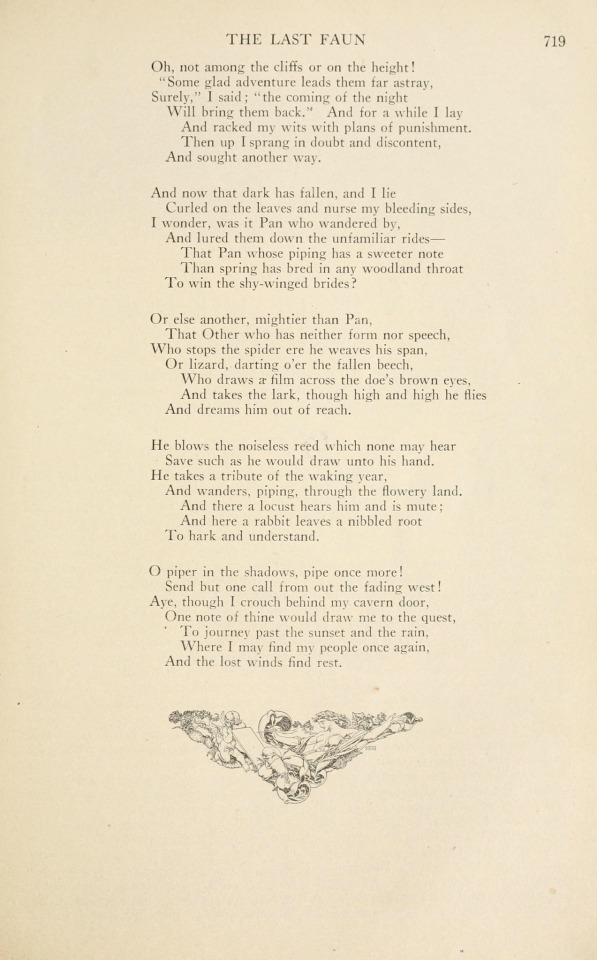
The Century Illustrated Monthly Magazine
Volume LXXXVI
May to October, 1913
Source : archive.org
THE LAST FAUN
by Helen Minturn Seymour
Artist : Charles A. Winter
#helen minturn seymour#charles a. winter#faun#faune#1913#charles allen winter#illustration#vintage illustration#old illustration#poem#poetry
170 notes
·
View notes
Photo
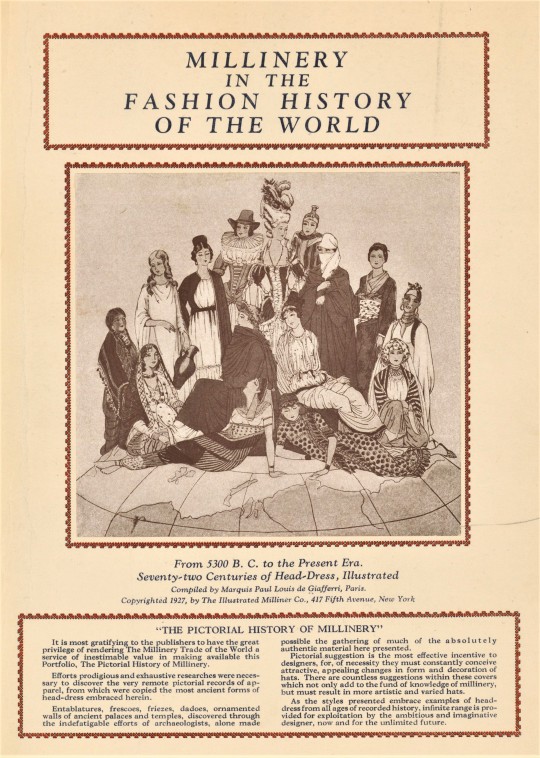

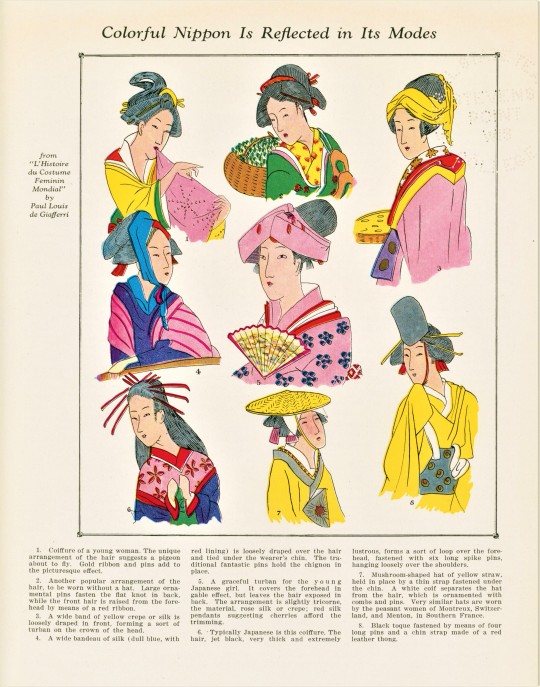
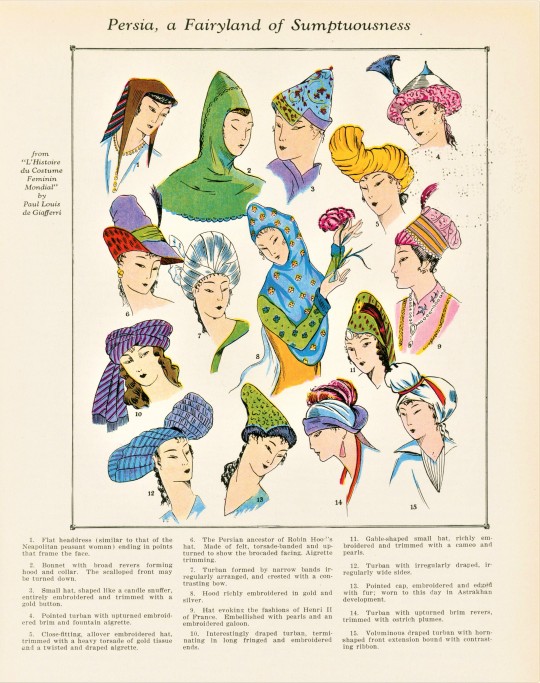
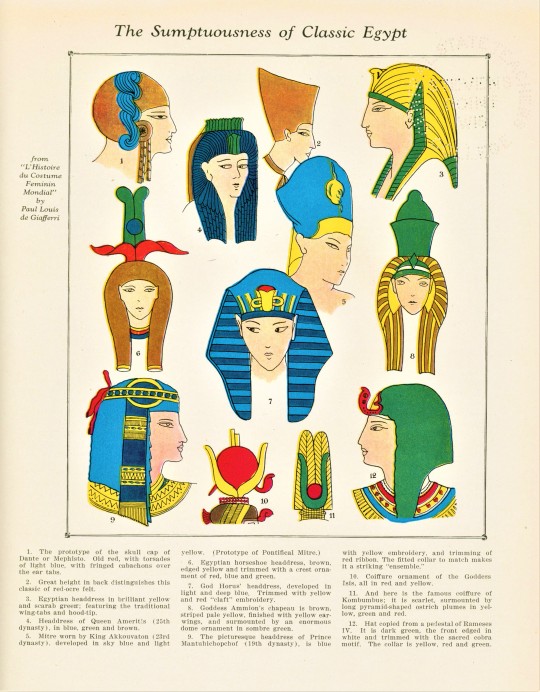
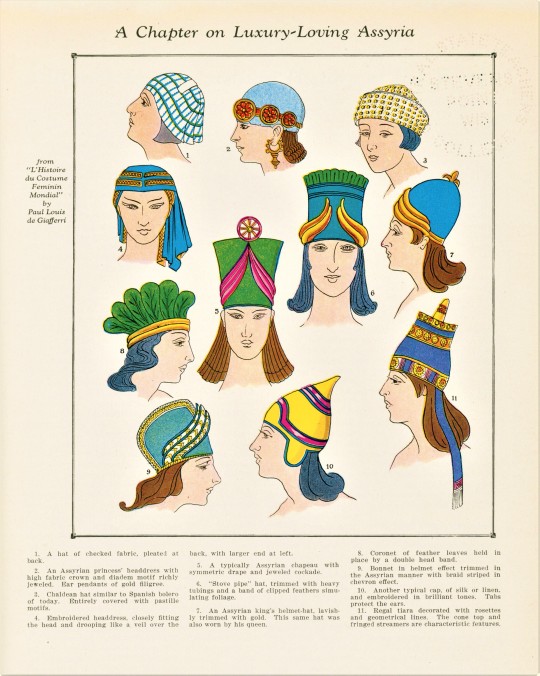
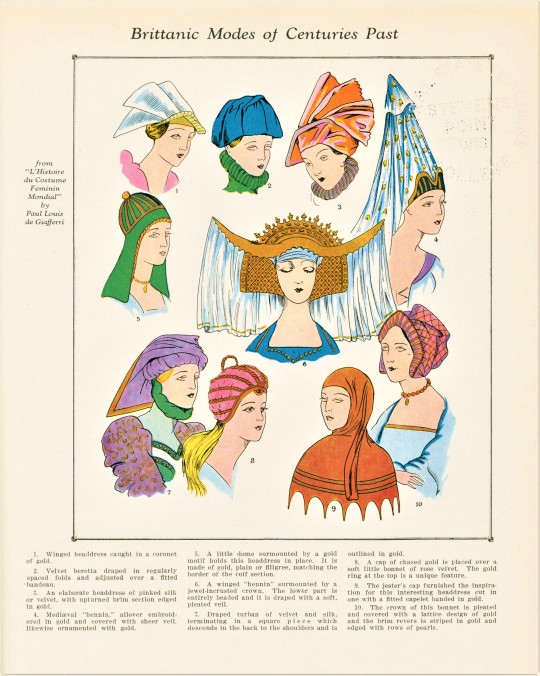



Fashion Friday Hat Mania!
We’re back to our regular Fashion Friday programming after this semester’s takeover by UWM MFA Graduate Student in Intermedia Arts, Christine Westrich. It has been a treat to see her perspective on our collection these last few months.
This week, we present plates from Millinery in the Fashion History of the World, by Paul Louis de Giafferri, originally published in segments from September of 1927 - December of 1928 in The Illustrated Milliner, a monthly magazine published in New York in the early 20th century by a publishing company of the same name. The monthly entries were later brought together into a set. Based on the cover (the first image above), it appears the plates were first published loosely in portfolio by The Illustrated Milliner and later bound, perhaps by The Central State Teacher’s College (now UW Steven’s Point), whose ownership stamp faintly marks each upper right corner. I borrowed this work from UW Steven’s Point Library after becoming intrigued by Giafferi’s work.
The plates themselves are reprinted from Giafferri’s L’histoire du Costume Féminin Mondial, (which we do hold here in Special Collections) with text condensed and translated from the original French, originally published in a series of portfolios by Éditions Nilsson of Paris, most likely from 1926-1927. The headings are additions for the American printing. It was also interesting to see some of the liberties the unidentified translator took with the descriptions on the plates. For example, #10 from the “New World Modes” plate reads:
The Illustrated Milliner: The prototype of Uncle Sam’s hat, made of beaver or silk plush and trimmed with a torsade of ribbon in two contrasting colors or tones.
L’histoire du Costume Féminin Mondial: Calotte haute, bords relevés d’un côté et abaissés de l’autre, avec torsade de deux tons de rubans au bas de la calotte. (A high cap, brim raised on one side and lowered on the other, with a twist of two-toned ribbons at the base of the cap)
To find out more about Giafferri and Éditions Nilsson, check out our previous posts on Giafferri’s works here.
View more Fashion Friday posts here.
And finally, you can find Christine’s creative take on our collection here.
-Olivia, Special Collections Graduate Intern
#Fashion Friday#Millinery in the Fashion History of the World#paul louis de giafferri#Giafferri#The Illustrated Milliner#Millinery#hats#chapeaux#L'histoire du costume Féminin Mondial#Éditions Nilsson#olivia
37 notes
·
View notes
Text
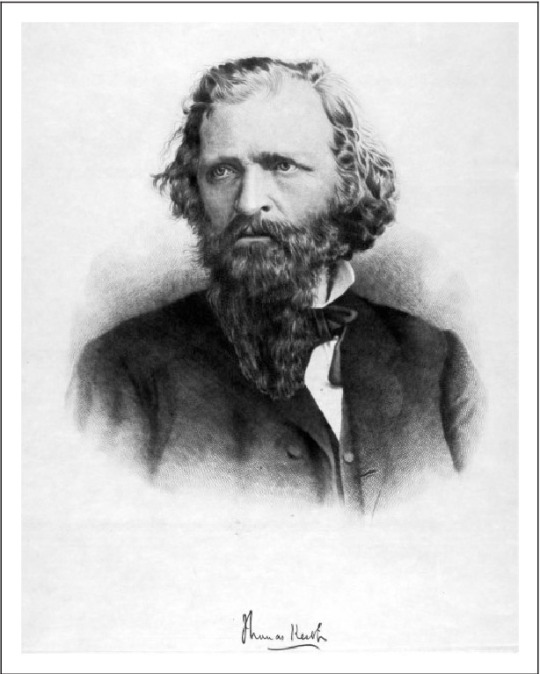
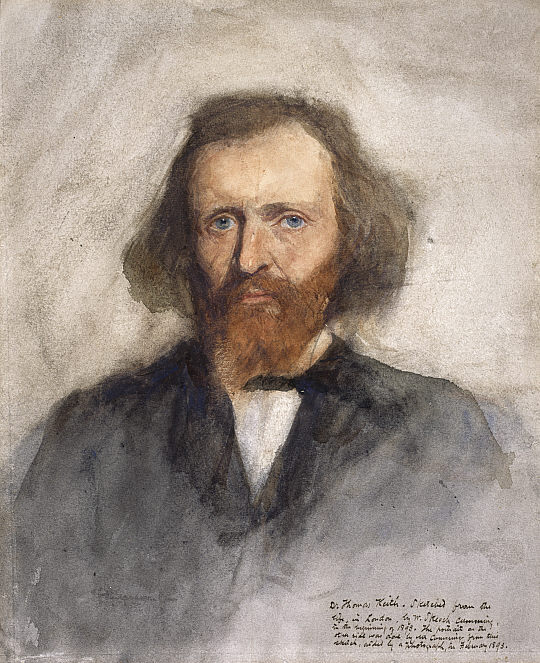

The leading surgeon and amateur photographer Thomas Keith was born on May 27th 1827 at St Cyrus Aberdeenshire.
The 7th son of a minister, one of the 450 that formed the Free Church during the disruption, his father rook an interest in early photography, which he passed on to his son.
Thomas was educate at Aberdeen Grammar School, The Royal High School Edinburgh and Marischal College Collage Aberdeen, where he graduated MA in 1848 he went on to complete his medical training in Edinburgh, graduating as a doctor and going on to be an assistant to the more famous James Young Simpson, before becoming a top surgeon in his own right.
Specialising of ovariotomy, (ovarian cystectomy) his published results were amongst the best in the world, Keith saved the lives of a higher proportion of his female patients than any of his contemporaries, wielding his surgeon’s knife with such speed and precision that, simply, fewer of them went into shock.
Keith teamed up with his friend John Forbes White, probably in the summer of 1853, to take waxed-paper views, which they entered into that year’s exhibition of the Aberdeen Mechanics’ Institution. The only other time Keith participated in a major public exhibition was at the 1859 meeting of the British Association for the Advancement of Science, held in his native Aberdeen.
During this time Keith mastered the waxed-paper negative like no one else, producing views of architecture in Scotland and urban studies of Edinburgh that had no equal, then or since. Light itself was his most formidable tool, and in 1856 he confessed to Photographic Notes: “I never expose my paper, unless the light is first-rate. This I have made a rule, and nothing ever induces me to deviate from it.” Keith was elected to the council of the Photographic Society of Scotland in 1856 and 1858, but was rarely able to attend meetings, for the demands of his medical practice crowded out his beloved hobby of photography.
At the time of his death in 1895, the Scotsman described Keith as “decidedly picturesque” in personal appearance, adding, “no one could see him without recognising that he was in the presence of a man of unique power.” For Alvin Langdon Coburn, writing in the Century Illustrated Monthly Magazine in 1915, Keith’s “Old Edinburgh” series stood out “as his most remarkable achievement with the camera,” and he included fifteen of Keith’s photographs in a pivotal exhibition at the Albright Art Gallery in Buffalo that year.
At a time when Scotland had some of the best photographers in the world in Adamson, Hill and the Anna Family, as well as Alexander Gardner plying his trade in the states, with his famous pictures of the Lincoln, and the civil war, Keith seems to often be overlooked, this is largely due to him giving his hobby up around 1856.
4 notes
·
View notes
Note
i love your posts but you're really annoying sometimes
JoJo's Bizarre Adventure (Japanese: ジョジョの奇妙な冒険, Hepburn: JoJo no Kimyō na Bōken) is a Japanese manga series written and illustrated by Hirohiko Araki. It was originally serialized in Shueisha's shōnen manga magazine Weekly Shōnen Jump from 1987 to 2004, and was transferred to the monthly seinen manga magazine Ultra Jump in 2005. The series is divided into nine story arcs, each following a new protagonist bearing the "JoJo" nickname. JoJo's Bizarre Adventure is Shueisha's largest ongoing manga series by volume count, with its chapters collected in 130 tankōbon volumes as of May 2021.
A 13-episode original video animation series adapting the manga's third part, Stardust Crusaders, was produced by A.P.P.P. and released from 1993 to 2002. The studio later produced an anime film adapting the first part, Phantom Blood, which was released in theaters in Japan in 2007. In October 2012, an anime television series produced by David Production adapting Phantom Blood and Battle Tendency began broadcast on Tokyo MX. As of December 2021, the studio has produced five seasons adapting through the manga's sixth part, Stone Ocean. A live-action film based on the fourth part, Diamond Is Unbreakable, was released in Japan in 2017.
JoJo's Bizarre Adventure is well-known for its art style and poses; frequent references to Western popular music and fashion; and battles centered around Stands, psycho-spiritual manifestations with unique supernatural abilities. The series had over 120 million copies in circulation as of December 2021, making it one of the best-selling manga series in history, and it has spawned a media franchise including one-shot manga, light novels, and video games. The manga, TV anime, and live-action film are licensed in North America by Viz Media, which has produced various English-language releases of the series since 2005.
Plot
See also:
List of JoJo's Bizarre Adventure characters
The universe of JoJo's Bizarre Adventure is a reflection of the real world with the added existence of supernatural forces and beings. In this setting, some people are capable of transforming their inner spiritual power into a Stand (スタンド, Sutando); another significant form of energy is Hamon (波紋, "Ripple"), a martial arts technique that allows its user to focus bodily energy into sunlight via controlled breathing. The narrative of JoJo's Bizarre Adventure is split into parts with independent stories and different characters. Each of the series' protagonists is a member of the Joestar family, whose mainline descendants possess a star-shaped birthmark above their left shoulder blade and a name that can be abbreviated to the titular "JoJo". The first six parts take place within a single continuity whose generational conflict stems from the rivalry between Jonathan Joestar and Dio Brando, while the latter two parts take place in an alternate universe where the Joestar family tree is heavily altered.
Part 1: Phantom Blood (ファントムブラッド, Fantomu Buraddo)
Volumes 1–5, 44 chapters. In late 19th-century England, Jonathan Joestar, the young son of a wealthy landowner, meets his new adopted brother Dio Brando, who loathes him and plans to usurp him as heir to the Joestar family. When Dio's attempts are thwarted, he transforms himself into a vampire using an ancient Stone Mask and destroys the Joestar estate. Jonathan embarks on a journey, meets new allies, and masters the Hamon (波紋, "Ripple") martial arts technique to stop Dio, who has made world domination his new goal.
Part 2: Battle Tendency (戦闘潮流, Sentō Chōryū)
Volumes 5–12, 69 chapters. In 1938, a German expedition discovers and awakens a Pillar Man, a powerful humanoid whose race created the Stone Mask. The Pillar Man kills the researchers and escapes to awaken the other Pillar Men so that they may regain dominance over humanity by obtaining the Red Stone of Aja. Joseph Joestar, Jonathan's grandson, unites with new allies and masters Hamon to defeat the Pillar Men.
Part 3: Stardust Crusaders (スターダストクルセイダース, Sutādasuto Kuruseidāsu)
Volumes 13–28, 152 chapters. In 1989, Dio Brando (now referred to as "DIO") awakens after his tomb is salvaged from the ocean. Because Dio had managed to capture Jonathan's body, Stands (スタンド, Sutando) awaken in Jonathan's descendants, consisting of Joseph, his daughter Holly Kujo, and grandson Jotaro Kujo. Holly, however, is unable to cope with her own Stand, and has only 50 days to live. Jotaro, Joseph, and their new allies set out to defeat Dio before this deadline expires, and encounter Dio's henchmen along the way.
Part 4: Diamond Is Unbreakable (ダイヤモンドは砕けない, Daiyamondo wa Kudakenai)
Volumes 29–47, 174 chapters. In 1999, the Joestar family learns that Joseph has an illegitimate son, Josuke Higashikata, who lives in the fictional Japanese town of Morioh. Josuke learns of a mystical Bow and Arrow that bestows Stands upon those struck by its arrowheads. As they hunt down the Bow and Arrow, Josuke and his allies encounter a serious threat in the form of the Stand-using serial killer Yoshikage Kira.
Part 5: Golden Wind (黄金の風, Ōgon no Kaze)
Volumes 47–63, 155 chapters. In 2001, in Naples, Italy, Giorno Giovanna is the son of Dio, conceived while he was in possession of Jonathan Joestar's body. Giorno seeks to become a mafia boss in order to eliminate drug dealers who sell their wares to children. His team, which consists of Stand users, must confront the mafia boss Diavolo and protect his daughter Trish Una, whom Diavolo intends to kill in order to hide his identity.
Part 6: Stone Ocean (ストーンオーシャン, Sutōn Ōshan)
Volumes 64–80, 158 chapters. In 2011, near Port St. Lucie, Florida, Jotaro Kujo's daughter Jolyne Cujoh is framed for murder and sent to prison. She works together with other Stand-using prisoners and her father to hunt down prison chaplain Father Enrico Pucci, loyalist to Dio, who seeks the creation of a new universe shaped to his and Dio's will.
Part 7: Steel Ball Run (スティール・ボール・ラン, Sutīru Bōru Ran)
Volumes 81–104, 95 chapters. In an alternate timeline's 1890, United States President Funny Valentine holds a cross-country horse race with a $50 million reward to the winner. Valentine intends to use the race to gather the scattered parts of a holy corpse for his own nationalistic ends. Racers Gyro Zeppeli and Johnny Joestar uncover Valentine's ploy and must defend themselves from his hired assassins.
Part 8: JoJolion (ジョジョリオン, Jojorion)
Volumes 105–131, 110 chapters. Set in the same universe as Steel Ball Run, in 2012, the town of Morioh has been devastated by the 2011 Tōhoku earthquake and tsunami, which has caused mysterious faults colloquially known as the "Wall Eyes" to appear in town. Local college student Yasuho Hirose discovers a young man buried in the rubble and nicknames him "Josuke". Suffering from amnesia, Josuke tries to uncover the secret of his past as he is also confronted with the activities of a local crime syndicate, which sells the fruit of a mysterious Locacaca tree, capable of healing people and then "taking" something in return.
Part 9: JOJOLANDS (ジョジョランズ, Jojoranzu) (Tentative title)
In the September 2021 issue of Ultra Jump, Araki confirmed that part 9 of the series, tentatively titled JOJOLANDS, would begin following a short break.
10 notes
·
View notes
Text
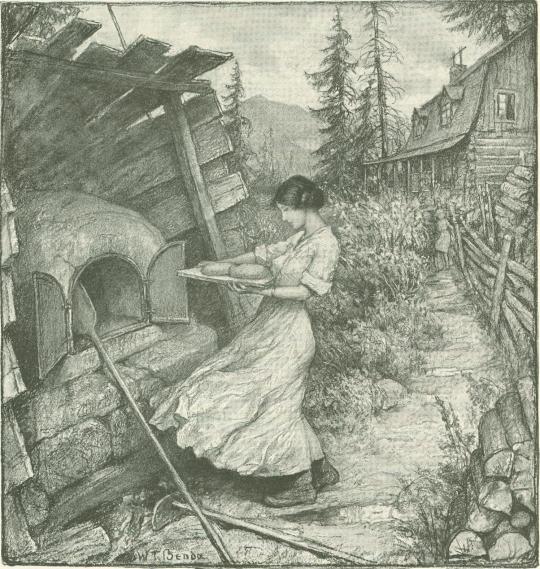
Baking Bread in Murray Bay ❧ (The Century Illustrated Monthly Magazine Vol. LXXXVI, No. 5, September, 1913)
2 notes
·
View notes